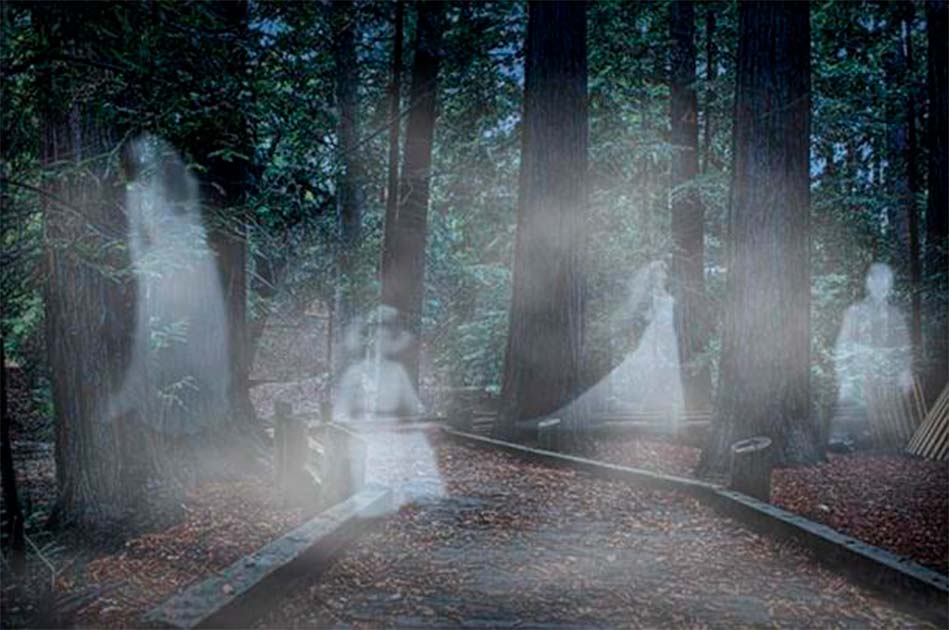The eerie name of “Hell House College” is associated with the former St. Mary’s College located in Ilchester, Maryland. Occasionally referred to as “Creepy College”, this institution was initially established as a Roman Catholic seminary in the 19th century, and was shut down approximately a hundred years later.
The college earned its eerie epithet due to the numerous folk tales and rumors that circulate about it, with stories of devil worship and haunting apparitions being the most prominent. What happened here, to earn this place its eerie reputation?
A Glimpse into the Past
Perched on a granite cliff that overlooks the Patapsco River in Ilchester, Maryland, lies the site of Hell House College. The Baltimore and Ohio Railroad was inaugurated in 1830, following which George Ellicott Jr. (the son of Ellicott Mills founder, Andrew Ellicott) decided to transform his Ilchester homestead into a tavern and hotel.
Ellicott banked on the trains stopping at Ilchester, anticipating that his establishment would attract passengers. However, his hopes were dashed when Ellicott Mills was selected as the primary stop in the area, resulting in a scant footfall in Ilchester.
- Ghost of Buckland Abbey: Does Sir Francis Drake Haunt his Devon Home?
- Miracle Cures and Terrible Curses: Vermont’s Brunswick Springs
With the failure of his enterprise, Ellicott decided to sell his property. Despite struggling for several years, he finally managed to sell his land in 1866 to the Congregation of the Most Holy Redeemer, commonly known as the Redemptorists.
The Redemptorists intended to transform the property into a seminary. The deal was finalized on June 12th, and the inaugural Mass was celebrated on August 28th on the third floor of Ellicott’s stone house (later referred to as the college’s ‘lower house’). Construction commenced on the “upper house”, the main building of the college, in March the following year, and by September 1868, classes were in session.
Initially, the college community consisted of 29 individuals, including three priests (who comprised the entire faculty) and 19 students. Over the decades, St. Mary’s College saw thousands of young men enrol for studies.
Reportedly, at its peak, the college housed between 100 to 150 students at a time. The Redemptorists managed the college until the mid-20th century. However, as student numbers gradually declined, the institution was compelled to shut its doors in 1972.

Speculations About the Closure
While dwindling student numbers led to the college’s closure, by the late 1980s, whispers about the “real” cause for the shutdown began to circulate. One such rumor claimed that a deranged priest had brutally killed several female students.
- Greenwich, Queen Anne, and the Ghost(s) of the Queen’s House
- India’s Haunted Village: Why was Kuldhara Abandoned?
This rumor might have originated due to some confusion with the Patapsco Female Institute. Another widely circulated tale suggested a priest raped nuns within the college and was subsequently discovered. The conclusion of this story varies – one version alleges that the accused priest escaped while the nuns, possessed by demonic forces, committed mass murder within the college. In another version, the nuns were found hanging with a blood-drawn pentagram underneath, and the priest was found dead from a self-inflicted gunshot wound.
It’s essential to note that St. Mary’s College was a seminary for men, not a nunnery. Despite this, these tales and many others contributed to the ominous nickname “Hell House College” being attributed to St. Mary’s College.

Although the college was officially closed in 1972, it remained under the ownership of the Redemptorists. A portion of the property was sold to the State of Maryland in 1987, and this segment eventually became a part of the Patapsco Valley State Park. The remainder of the property was sold off to private entities.
Today, very little remains of the seminary’s former presence. The “lower house” was consumed by a fire in 1968, while another blaze reduced the “upper house” to ashes in 1997. The remaining structures were demolished in 2006, leaving behind only a handful of remnants such as foundations, concrete staircases, and an altar beneath a colonnaded pavilion, silent witnesses to the past.
Top image: The altar, one of the remaining structures in Hell House College. Photo source: Forsaken Fotos / CC BY 2.0.
By: Wu Mingren